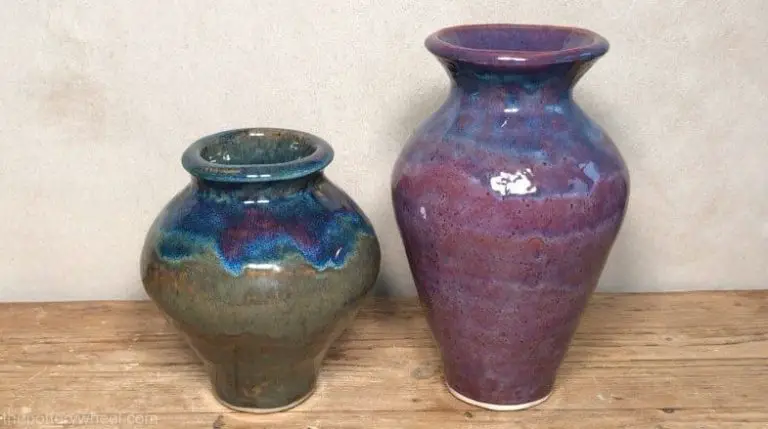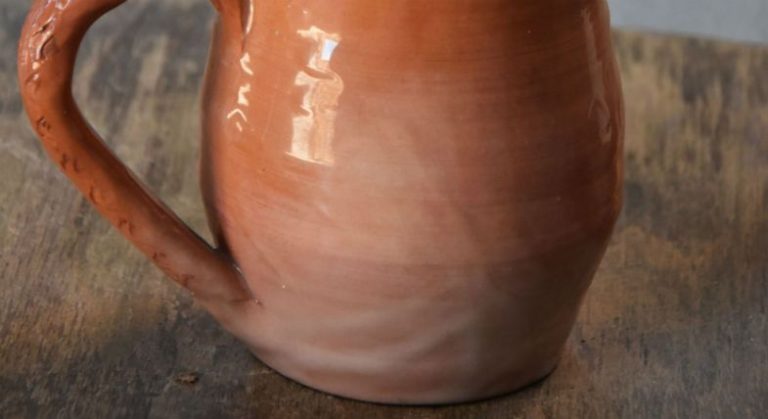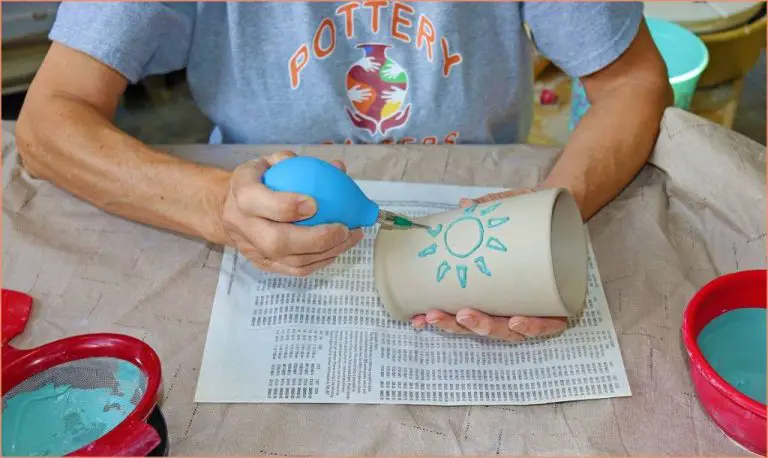Can I Attach Polymer Clay To A Mug?
Polymer clay crafting has become an increasingly popular hobby and art form over the last few decades. With its versatility and ability to mimic various materials like metal, glass, and stone, polymer clay is a unique medium for creative expression. One fun way to use polymer clay is to attach it to the outside of a basic ceramic mug to create a customized, sculptural drinking vessel.
Applying polymer clay designs to a mug allows you to make a functional work of art that is both decorative and useful. The colors and textures of the clay can transform a plain mug into your own creative canvas. Polymer clays come in a wide array of colors, so you can match it to your own personal style or make bright, colorful creations. Decorating a mug adds a bit of handmade charm to your morning coffee or tea routine. With some simple techniques, polymer clay can stick to mugs of all shapes and sizes, making this an easy craft accessible to beginners. This guide will walk through the process of attaching polymer clay to a mug and offer tips for sculpting, baking, and finishing your own polymer clay mug.
What is Polymer Clay?
Polymer clay is a modeling and sculpting material made from PVC resin and non-toxic plasticizers and colorants. It is a pliable material that can be molded and shaped while soft, then hardened by baking in a regular home oven. Polymer clay remains flexible and durable after being cured.
There are several major brands of polymer clay:
- Sculpey – The original polymer clay, made in the United States. Comes in a wide range of colors.
- Fimo – A German brand known for vibrant colors. Softer than Sculpey.
- Premo! – Another American clay, smooth texture and ability to achieve fine details.
- Kato Polyclay – Made in Japan, very firm and good for structural pieces.
Polymer clay can be mixed and blended to create custom colors. It is a versatile material for handicrafts, jewelry making, decorative objects, and more. The even consistency and malleability of polymer clay enables detailed shaping and sculpting.
Preparing the Mug
Before attaching polymer clay to a mug, it’s important to start with the right mug and prepare the surface properly. Choosing the right material and shape of mug will ensure the clay adheres well and complements the overall design.
Look for mugs made of porous materials like ceramic, terra cotta, or unfinished wood. The slight texture on these materials gives the clay something to grip. Smooth glass or glazed ceramic mugs are not well-suited for polymer clay. Opt for a simple, cylindrical mug shape without handles or intricate details. This will give you the most flexibility when sculpting the clay.
Make sure the mug is completely clean and dry before applying any clay. Wash it thoroughly with soap and warm water, avoiding any abrasive sponges. Rinse and dry the mug completely with a clean, soft towel. You can also use rubbing alcohol on a cotton pad to remove any residue. Gently sanding the outer surface of the mug will help the clay adhere even better.
Attaching the Clay
When attaching polymer clay to a mug, you have two main options – using liquid clay or using raw clay. Both have their own benefits and challenges.
Liquid clay acts as an adhesive, allowing you to attach raw clay firmly to the mug’s surface. The benefit of liquid clay is that it creates a strong bond quickly. However, the downside is that liquid clay can sometimes leave behind a sticky residue on the mug. Using too much liquid clay can also result in cracks forming when baking.
Attaching raw clay directly to the mug avoids using liquid clay. The benefit here is no sticky residue. The challenge is ensuring the raw clay adheres properly. To do this, gently press and smooth the raw clay onto the mug’s surface. Apply firm pressure with your fingers to meld it to the mug. Scrape the edges with a clay tool to tidy them. This takes more time than liquid clay but creates a seamless finish.
For best results, start with a thin layer of liquid clay to tack the raw clay in place. Then, blend and smooth the edges of the raw clay into the mug to hide any seams. This combines the strength of the liquid clay with the seamless look of direct application.
Whichever option you choose, ensure the clay is firmly attached all over before baking. Try not to leave any thin sections or air pockets, as these can cause breaking or warping.
Sculpting the Clay
One of the best parts of creating polymer clay pieces is sculpting your custom design. Sculpting on a curved mug surface is a bit different than sculpting a flat piece. Here are some tips for sculpting 2D and 3D designs on your mug:
For a 2D sculpted design, use a roller or acrylic block to flatten out the clay evenly on the surface. Smooth the edges and use craft knives or clay shapers for detail work. Consider sculpting shapes, patterns, words, or 2D images. Let the clay extend slightly over the mug edge for a visually seamless look after baking.
For a 3D sculpted design, build up the clay thickness for dimensional elements that pop off the mug. Use clay sculpting tools to add texture, indentations, or shaped designs. Try sculpting 3D flowers, animals, logos, or geometric shapes on your mug. Add thin coils of clay for raised details. Place larger clay pieces on in desired areas, securing seam edges by blending the clay together.
Work slowly and gently while sculpting to avoid distorting or cracking the clay. Mist with water if the clay becomes too dry. Allow your creativity to run wild and sculpt any design that inspires you!
Baking Instructions
Proper baking is essential for polymer clay pieces to cure fully and remain durable. Follow the manufacturer’s instructions for baking temperature, duration, and any special directions. Typically polymer clay should be baked for 15-30 minutes at 265-275°F.
You have a few options for how to bake polymer clay:
- Standard Oven – Use the conventional oven in your kitchen if the piece is small enough to fit. Place the item on a baking sheet or ceramic tile.
- Toaster Oven – A toaster oven with a temperature dial is ideal for baking smaller polymer clay pieces. The confined space helps the clay cure evenly.
- Heat Gun – For curing very small pieces or sections, you can use a heat gun to direct hot air onto the clay. Keep the heat gun moving constantly to prevent burning.
Always refer to the clay manufacturer’s guidance on proper baking instructions. Underbaking can lead to weak, tacky clay while overbaking may burn or discolor the clay.
Finishing Touches
Once your polymer clay mug creation has been baked and fully cooled, there are a few finishing touches you can complete to get your piece to the perfect state. Two main finishing touches for polymer clay are sanding and clear coating.
Sanding the polymer clay after baking helps smooth out any rough edges or bumps in your sculpted design. Start with a coarse grit sandpaper like 120 grit to work out the bigger imperfections. Then move to progressively finer grit sandpapers like 220, 400, and 600 to achieve a smooth surface.
Sand gently and be careful around intricate details or applied pieces. Always sand following the contour of the pieces rather than against them to avoid unintended scratches or damage. Wipe away any dust between sanding grits.
Once sanded, you can apply a clear gloss glaze or sealant to give your piece a polished, professional look. This adds a protective coating and enhances the colors. Apply 2-3 thin coats of the glaze, allowing it to dry completely between coats. Allow the final coat to cure for 24 hours before use.
With these finishing touches, your unique polymer clay mug will have a smooth finish and vivid colors that are built to last!
Design Ideas
When decorating your mug with polymer clay, the options are endless! Here are some popular design ideas to spark your creativity:
Cute animal shapes like cats, dogs, bunnies, and birds are always adorable on mugs. Sculpt 3D figures of your favorite pets or woodland creatures. Add details like eyes, ears, tails, and paws to bring them to life. Glazing helps animals shine.
Geometric patterns made from squares, circles, triangles, diamonds, and lines have a modern, sleek aesthetic. Press thin clay snakes or custom shaped canes into repeating motifs. Keep it simple or get fancy with various shapes and textures.
Floral designs are a lovely way to bring nature indoors. Sculpt delicate flowers like roses, daisies, and lilies or bold tropical blooms. Add leaves, vines, branches, and berries for texture. Arrange patterns or standalone vignettes.
Care and Maintenance
Now that your polymer clay mug is complete, you’ll want to take proper care of it to extend its lifespan. Here are some tips for handwashing and avoiding damage from heat:
Handwashing is recommended for polymer clay mugs. Use a gentle detergent and warm water. Avoid abrasive sponges or scrubbing that could scratch the surface. Rinse thoroughly after washing. Dry completely with a soft towel before storing.
Take care not to expose polymer clay to temperature extremes. Avoid putting the mug in the microwave or oven. The clay can become misshapen or damaged under high heat. Also avoid freezing the mug, as this can make the clay more brittle and prone to cracking.
Store the mug away from direct sunlight and humid environments to prevent fading. With proper care and gentle handling, a polymer clay mug can last for years!
Summary
With a few simple materials and some creativity, attaching polymer clay to a mug can turn an ordinary cup into a fun, customized work of art. The process allows endless design possibilities while being approachable even for beginners. The versatility of polymer clay makes it an ideal choice for creating decorative mugs with sculpted shapes, textures, and colors.
However, there are some challenges to be aware of. The clay can be prone to fingerprints during handling, so careful sculpting is important. Proper baking is also key to ensuring a durable result. Rushing the baking or using too high of a temperature can cause cracks or bubbles in the clay. Patience and following the manufacturer’s instructions will help avoid mishaps.
Here are some tips for success when attaching polymer clay to mugs:
- Make sure the mug surface is fully clean and dry before applying clay.
- Use liquid clay for the best adhesion to the ceramic.
- Roll out clay to an even thickness before cutting shapes.
- Work carefully to avoid distorting thin parts like handles.
- Check clay thickness guidelines and bake at recommended temperatures.
- Allow the mug to fully cool after baking before handling.
- Consider a clear glaze or sealer for added protection.
With smart preparation and care, polymer clay mugs offer a rewarding DIY project for all skill levels. The finished pieces make wonderful gifts or unique additions to your own kitchen collection.



